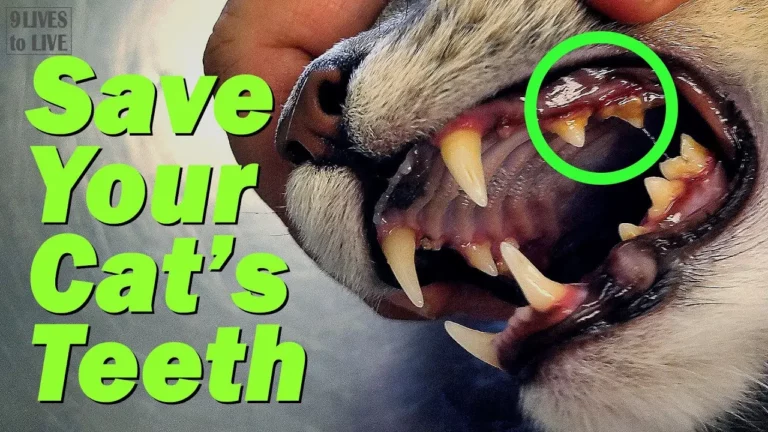Microchips vs Cat Collars: What Is The Best Identification For Your Cat?
As a
The debate between microchips and
With one in three pets likely to get lost in their lifetime, it’s a concern that’s far from trivial.
Microchips are often hailed as the ultimate pet identification tool, but they’re not without their misconceptions.
On the other hand,
In this article, we’ll delve into the pros and cons of each method, exploring the latest technology in pet identification, and helping you make an informed decision for your furry friend’s safety.
Understanding Cat Identification Options
Assuring your furry friend’s safety requires some form of identification.
Two such prevalent methods garner attention and valid discussion –
This section helps elucidate on these topics, giving you the knowledge to make an informed decision.
Cat Collars
Featuring an ID tag,
Anyone who finds a lost
Traditional collars, such as the adjustable plastic clip or buckle collar, come highly recommended.
A well-fitted collar creates less frustration for pets and their caretakers, contrasting to breakaway collars, which can separate easily.
Slipping one finger under a
Noting signs of wear on your pet’s collar is also crucial. If it appears frayed or likely to break, consider replacing it with a new collar.
Cats may also find additional benefits from collars equipped with bells or reflective materials.
Bells serve to protect wildlife, whereas reflective materials enhance visibility at night.
Microchipping
An invaluable safety-tool for pets, the microchip, offers a permanent solution, unlike collars which can fall off or get lost.
Microchipping, however, isn’t a replacement for a collar and ID tags, rather an auxiliary level of identification and protection for lost or stolen pets.
The microchip, a permanent backup option, is placed under the loose skin between the shoulder blades.
Administering a microchip isn’t more painful than drawing blood and is a quick, fairly non-invasive, and cost-effective option.
It’s essential to address some misunderstandings around microchipping as some owners worry about its safety.
Out of millions of cats that receive microchips, side effects like the microchip migrating to another location or a tumor developing at the injection site are extremely rare.
The benefits of microchips thus far outweigh the occasional side effects.
While smart collars equipped with GPS capabilities and additional features to track pets help significantly, their efficiency banks on consistency in wearing them.
The microchip shines in instances when the pet might lose or not wear the smart collar for some reason, therefore complementing rather than replacing the collar.
Proactive identification prepares pet owners for unforeseen circumstances. While microchips and collars both serve as efficient identification tools, their combined use offers the best approach for safe and secure pet ownership.
Pros and Cons of Cat Collars
Like all pet identification methods,
Benefits of Using Collars for Cats
A paramount advantage of
They can hold ID tags carrying vital owner contact information, which can expedite the reunion process if cats stray from their residences.
Suppose a well-meaning individual stumbles upon a wandering
Contrasting with a microchipped feline, they’ll understand immediately that the collar-wearing
In that case, they won’t require a special scanner to access owner contact details – it’s conveniently right there on the
Moreover, for indoor cats that manage to escape, collars are instrumental in demonstrating their domesticated status.
They ensure your feline friend doesn’t mislead people into thinking they’re a stray, which can prevent unnecessary shelter visits.
Potential Drawbacks of Feline Collars
Despite their advantages, there are potential drawbacks to consider when opting for
One of these concerns relates directly to their visibility. Feline adventurers might get their collars hooked on branches or fences while exploring, posing risk of entrapment.
It’s usual for first-timers, be it kittens or adult cats unused to collars, to feel uncomfortable initially.
They might scratch excessively at the collar, finding its foreign substance irritating.
However, with patience and perhaps distraction techniques like engaging toys or treats, they can eventually adapt.
Another concern regards collar removal.
There are possible scenarios where a
For instance, going collarless intentionally for grooming or by accident during one of their many furry escapades.
In such situations, without a backup identification like a microchip, locating a lost pet might become more challenging.
In summation, while
As the ultimate goal seeks to safeguard our feline companions, equipping them with both a collar and a microchip certainly seems a balanced approach.
Remember: our little purring friends depend on us to make decisions in their best interest.
The Case for Microchipping Cats
In the arena of pet identification, microchipping brings substantial benefits worth considering.
Particularly for cats, characterized by their wanderlust and curiosity, modern microchip technology offers an extra layer of protection that collars can’t always provide.
How Microchips Work for Feline Safety
Microchips, tiny devices roughly the size of a grain of rice, function as a permanent form of identification.
They’re injected under the loose skin between a
These chips carry a unique code, visible under a specialized scanner, linking the
Unlike collars, which cats can lose or remove, microchips are virtually loss-proof.
They offer a surefire identification method if your feline companion ever gets lost.
As microchips are internal, risks such as snagging, choking, or the collar becoming a trap are eliminated, adding a robust failsafe layer to the
Nevertheless, it’s important for pet owners to ensure their contact details are kept up-to-date in the associated database.
Effective as microchips are, they don’t negate the need for collars altogether.
The ideal strategy involves combining both—a visible method of identification (collar) and a fail-safe backup (microchip).
This dual-approach can provide the maximum protection a
Limitations of Microchip Technology
Inasmuch as microchip technology revolutionizes pet identification, certain drawbacks exist.
One of the most significant is the potential migration of the chip, although such instances remain extremely rare.
There is also the infinitesimal risk of tumor development at the injection site – yet, no proven cases corroborate this concern presently.
The most prevalent limitations of microchip technology in aiding feline safety are, however, external.
For instance, a lack of universal standard amongst chip manufacturers often leads to compatibility issues with scanners.
Additionally, not every person who finds a lost
Despite these limitations, the reach and benefits of microchips far outnumber potential risks.
It’s about embracing modern technology to ensure the safety of our feline friends while learning to manage any shortcomings along the way, always aimed at improving their quality of life.
Microchips Vs Cat Collars: Making an Informed Choice
Let’s delve into specific considerations and benefits to aid in your decision regarding
Factors to Consider in Identification Methods
Forefront in your selection of identification methods for your feline companion, consider the potential risks and benefits.
Microchips offer a permanent solution, remaining with the feline for life but consider the slim chance of potential chip migration or the extremely rare instance of tumor development at the injection site.
Bear in mind, these occurrences are unlikely when compared to the sheer number of successful microchip procedures.
On the flip side, smart collars provide interactive monitoring of your
Nevertheless, the effectiveness of a collar correlates directly to it remaining on your pet.
A collar serves no purpose if it falls off or is forgotten to be put back on post grooming sessions.
The Dual Approach: Utilizing Both for Maximum Safety
Taking a balanced approach to the safety of your feline friend might involve combining both identification methods.
Microchipping affords a back-up in instances where collars might be removed or lost.
In fact, the rates of reunification of lost pets with their owners significantly increase when a microchip has been implanted.
At the same time, smart collars can provide real-time information about the location and habits of your
Advanced models can even keep vet records, set appointment reminders, and assist in training with audio cues.
In essence, a dual approach of using microchips and smart collars leverages technology’s best features to ensure our pets’ utmost safety.
It’s the reassurance of added layers of protection that our furry companions deserve in their adventurous lives.
The Future of Feline Identification
As I delve deeper into our exploration of
Advancements in technology offer innovative functionalities both in collars and microchips.
We are looking at two unique tools which, when used together, offer optimal protection for our feline companions.
Innovations in Collar Technology
Major strides have been made in the development of
Notable brands, such as the LINK AKC Smart Collar, not only provide standard tracking but also deliver extensive insight into our pets’ recent activities.
If a kitty is on the prowl and gets lost, these smart collars hint at their last known location.
And the functionalities don’t stop there.
These advanced collars also store vet records, provide reminders for the next health check-up, and offer sounds that assist in training.
Another salient feature available in these smart collars is the built-in LED light, turning on with a single tap on the smartphone screen.
With this, visibility for the
However, no matter the advanced technology, these collars come with the fundamental caveat – they only work if they’re on the pet.
Advancements in Microchipping
Microchipping, on the other hand, provides a robust solution to this problem of potential collar removal.
Microchips are small devices implanted under the skin of the pet, offering a permanent method of identification.
If a collar gets lost, or the
Getting a microchip for cats doesn’t affect their privacy.
When scanned, the RFID scanner picks up a coded number linked to the owner’s details secure in a database, ensuring that sensitive information remains protected.
In effect, a microchip forms a solid backup line of defense in locating and identifying lost felines, supporting the tag-team approach with collar technology.
While collars carry added benefits such as easy visibility and detection, microchips offer a failsafe backup plan for identification.
In the evolving landscape of pet safety, these two forces contribute to alleviating frayed nerves about a lost pet and fewer heartbreaking flyers tacked to telephone poles.
Going forward, it appears that the future of feline identification poised to be a combination of collars and microchips. And in this case, it’s safe to say, two is indeed better than one.
Wrapping It up
So, it’s clear that the choice between microchips and
Each has its own strengths and weaknesses, and they complement each other in safeguarding our feline friends.
Smart collars with their advanced tech, like tracking and visibility features, offer immediate identification and location. But they’re not foolproof, and that’s where microchips step in.
They’re a permanent solution, acting as a safety net when collars fail. It’s this combination of the two that truly maximizes pet safety.
After all, our cats aren’t just pets, they’re family, and their well-being is our priority.






